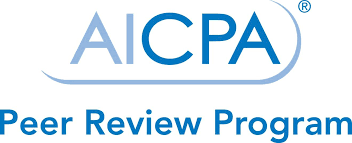Minimize your responsibilities and concentrate on running your business and maximizing profits. Allow the Firm of Kenneth M Daniels CPA PA to maintain a set of books.
Each month or quarter, the Firm will provide the following services:
Reconcile your bank account(s)
Reconcile your PayPal account(s)
Generate an income statement
Generate a balance sheet
Provide a general ledger for review and classification approval
The above items will provide a basis for the assessment of profitability, income tax preparation, and audit trails for income, sales tax, payroll tax, and workers’ compensation audits.
Additional services may be added as needed: income tax preparation, tax planning, or payroll tax services.
Bank Reconciliation
Reconciling your business checking account or PayPal account each month keeps your bank accounts, accounting, and tax return information up-to-date.
By performing monthly reconciliations, we can assist in:
Identifying lost checks, deposits, and unauthorized transactions
Detecting and preventing incorrect bank charges
Ensuring that your bank posts transactions correctly
Providing accurate financial statements, for business assessment
Allowing for effective cash management by minimizing funds needed for operation; excess funds can be invested
Protecting yourself and your business through notification of any unauthorized, fraudulent, or forged checks presented and paid by your bank - you can shift the responsibility for the transaction to the bank
Income Statement
An income statement, otherwise known as a profit and loss statement, itemizes all revenues and expenses. It deducts expenses from revenues and computes a profit or loss for the period.
An income statement provides information which allows the business owner to:
Determine the operating performance of the business
Identify operating metrics over time – gross profit and markup
Focus on unusual items of revenue or expense
Track significant increases/decreases in various revenues and expenses
Determine your income tax liability
Balance Sheet
A balance sheet gives you a snapshot of your business's financial condition at a specific moment in time.
A balance sheet allows a business owner to:
Analyze the business’s financial strength and capabilities
Perform analytics on the various balance sheet accounts – cash, accounts receivable, capital assets, accounts payable, long term liabilities
Assess the business’s ability to grow
Forecast the business’s ability to handle seasonal spikes/downtrends in revenues and expenses
Determine if adequate cash is on hand
Financial statements consisting of the balance sheet and income statement are the minimum in financial reporting.
General Ledger
The general ledger is the detail of the company's financial records. It indicates balance sheet accounts beginning balances, transactions, and ending balances. It indicates the transactions and resulting ending balances in the income statement. These records form the core of the bookkeeping system. Since every transaction flows through the general ledger, any misclassification potentially creates an error.
A detailed review of the general ledger can identify any discrepancies such as double billings or unrecorded payments.





.JPG)
.JPG)
.JPG)
.JPG)
.JPG)
.JPG)




